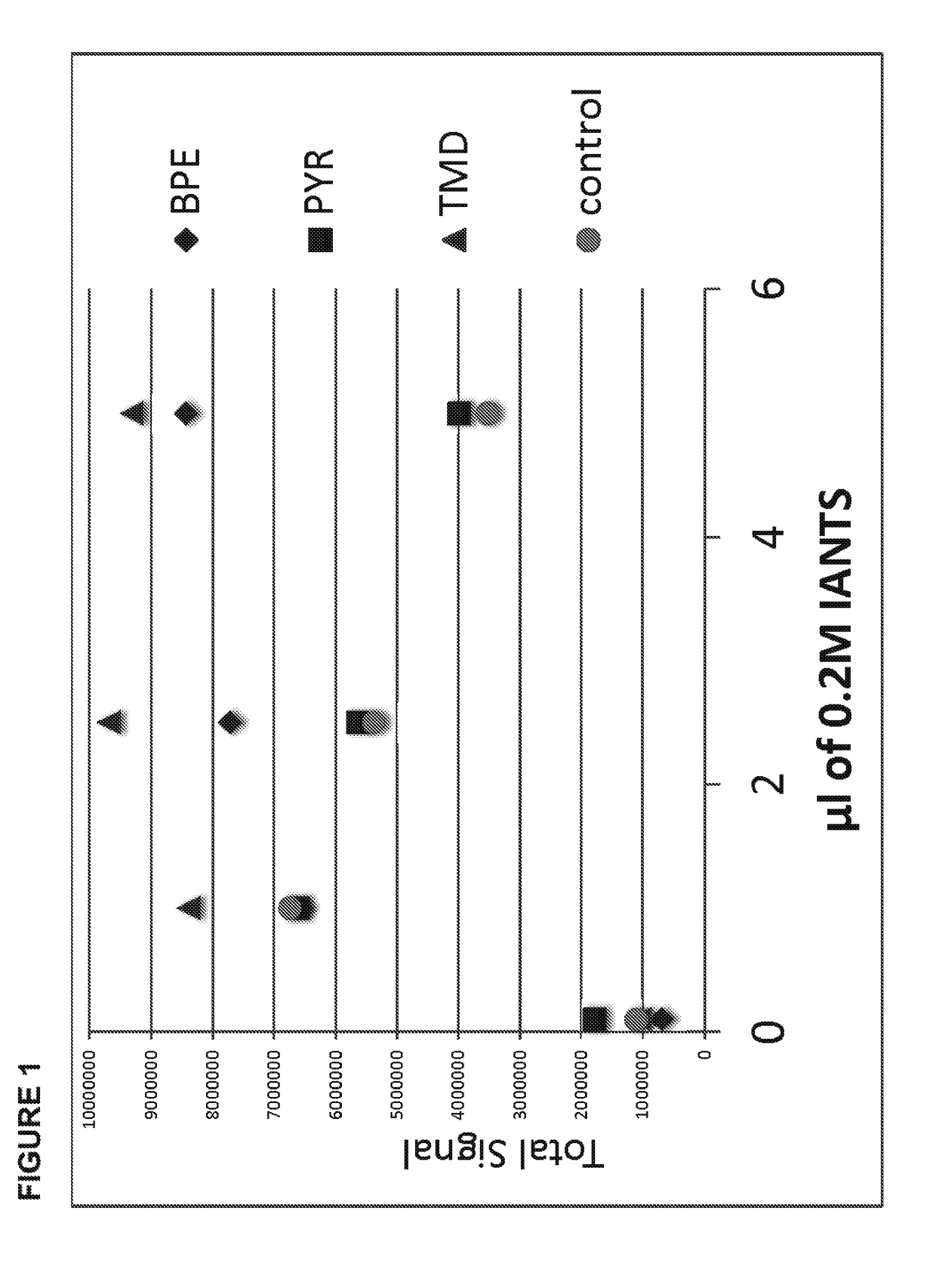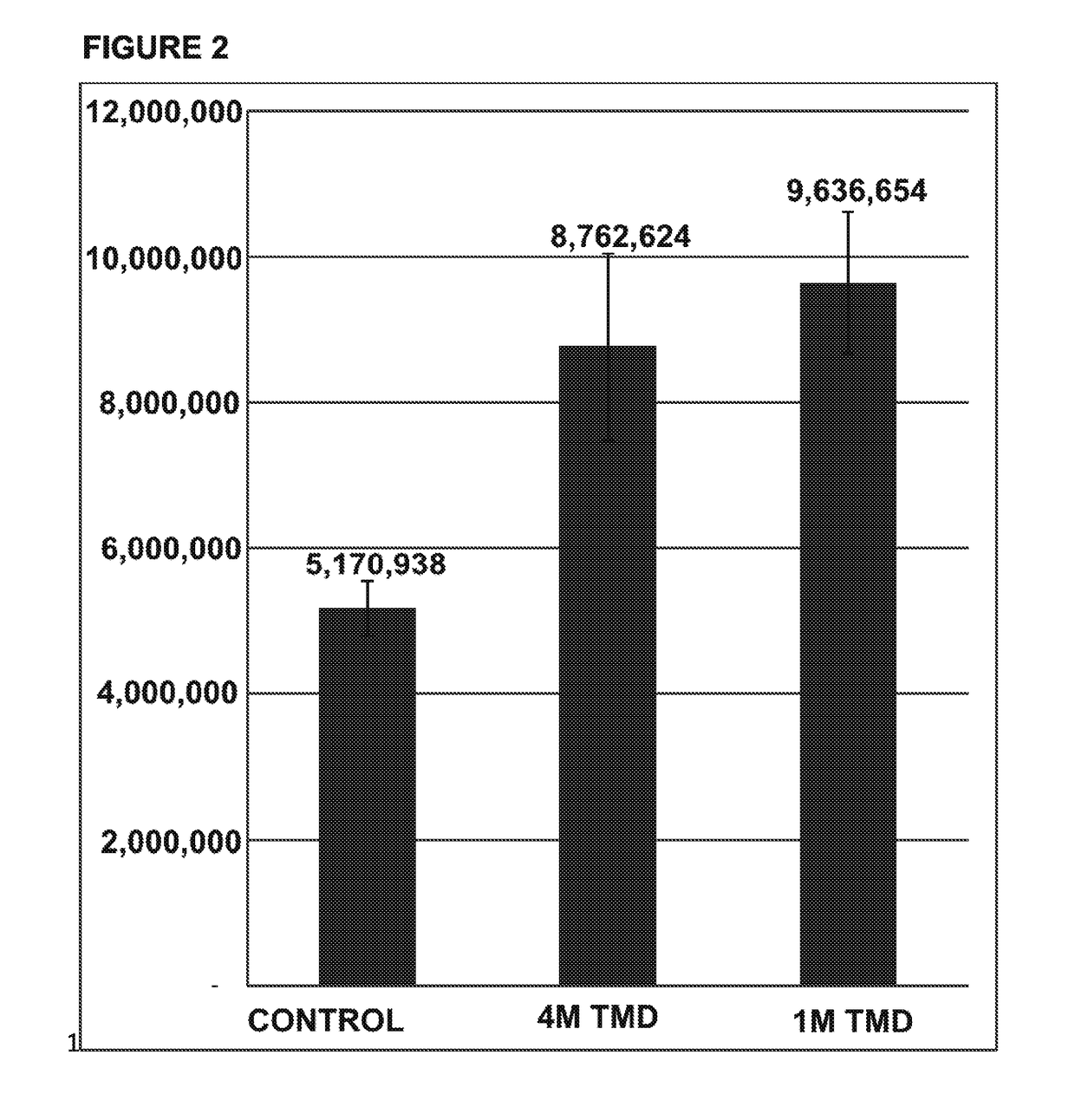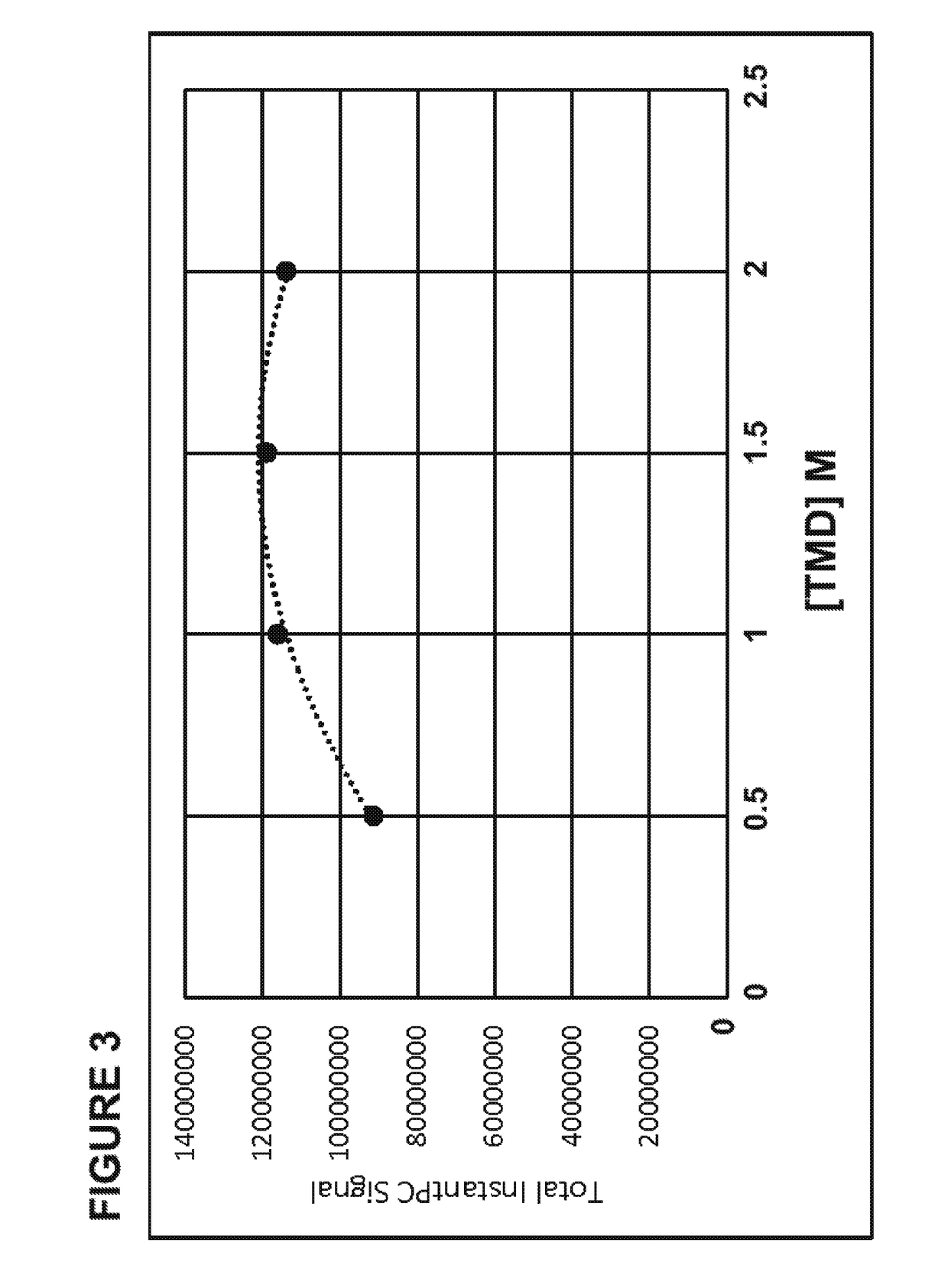Use of bispyridines to improve labeling of nucleophiles
a technology of bispyridine and nucleophile, applied in the field of improving the labeling of nucleophilic biomolecules, can solve the problem of incomplete labeling of glycans released from glycoproteins by enzymatic digestion
- Summary
- Abstract
- Description
- Claims
- Application Information
AI Technical Summary
Benefits of technology
Problems solved by technology
Method used
Image
Examples
example 1
[0034]This Example sets forth abbreviations for some of the reagents used in exemplar workflows of deglycosylation and labeling procedures performed using exemplar bispyridines in some of the Examples below.
[0035]“HEPES”: 4-(2-hydroxyethyl)-1-piperazineethanesulfonic acid
[0036]“DMF”: dimethylformamide
[0037]“DMSO”: dimethyl sulfoxide
[0038]“TMD”: Pyridine, 4,4′-(1,3-propanediyl)bis-
[0039]“BPE”: Pyridine, 4,4′-(1,2-ethanediyl)bis-
[0040]“PNGase F mix”: a 1:1 mix of PNGase F (˜1 mg / ml) and 750 mM HEPES pH 8.0 buffer.
example 2
[0041]This Example sets forth an exemplar workflow for deglycosylating and labeling an amine-reactive compound using an exemplar bispyridine.
Denaturation Step
[0042]Twenty μl of 2 mg / ml glycoprotein is added to the bottom of a PCR plate. Two μl of a detergent, such as sodium lauroyl sarcosinate, is added. Optionally, a reductant, such as bis(2-mercaptoethyl) sulfone, can be added. The mixture is incubated for 3 minutes at 90° C.
Enzymatic Digestion Step
[0043]Two μl of PNGase F mix is added. The resulting mixture is incubated for 5 mins at 50° C.
Labeling Step
[0044]The released glycosylamines are labeled with a dye of choice. The dye is typically a fluorescent dye and in some embodiments is also compatible with mass spectrometry. As an example, the dye can be activated procaine, sold as InstantPC (ProZyme, Inc., Hayward, Calif.). For example, glycans released from a glycoprotein by the action of PNGase F are initially released as glycosamines, which can be labeled by, for example, addin...
example 3
[0047]This Example reports the effect of studies on the use of bispyridines on labeling of glycosylamines.
[0048]An exemplar glycoprotein, porcine gamma globulin, was subjected to enzymatic digestion by an exemplar deglycosylation enzyme, PNGase F. Glycosylamines released from the glycoprotein, containing the buffer HEPES, at pH 8, were labeled using four different amounts, 0.1 μl, 1 μl, 2.5 μl or 5 μl, of an acidic dye, 8-[(2,5-dioxopyrrolidin-1-yl)oxycarbonylamino]naphthalene-1,3,5-trisulfonic acid, at a concentration of 0.2 M, using anhydrous dimethyl sulfoxide (“DMSO”) as a solvent, in the presence of 2.5 μl of the following, each of which were also prepared in anhydrous DMSO: (a) 1M Pyridine, 4,4′-(1,3-propanediyl)bis- (“TMD”), (b) 1M Pyridine, 4,4′-(1,2-ethanediyl)bis- (“BPE”), or (c) 1M pyridine (“PYR”). As a control, glycosylamines were also labeled using the same amounts of the dye, but with only the DMSO solvent (“control”). The labeled glycans were analyzed by HPLC and tot...
PUM
| Property | Measurement | Unit |
|---|---|---|
| pH | aaaaa | aaaaa |
| pH | aaaaa | aaaaa |
| pH | aaaaa | aaaaa |
Abstract
Description
Claims
Application Information
 Login to View More
Login to View More - R&D
- Intellectual Property
- Life Sciences
- Materials
- Tech Scout
- Unparalleled Data Quality
- Higher Quality Content
- 60% Fewer Hallucinations
Browse by: Latest US Patents, China's latest patents, Technical Efficacy Thesaurus, Application Domain, Technology Topic, Popular Technical Reports.
© 2025 PatSnap. All rights reserved.Legal|Privacy policy|Modern Slavery Act Transparency Statement|Sitemap|About US| Contact US: help@patsnap.com



